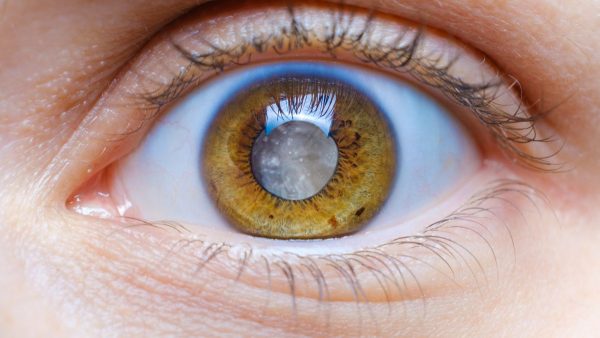What does vision with cataracts look like?

Cataracts are a common eye condition that can make the world appear hazy and unclear. If you’ve ever tried to look through a frosted or fogged-up window, you have an idea of what cataract vision feels like. This cloudiness affects everyday tasks like reading, driving, or even recognizing the faces of loved ones. Let’s break down what cataracts are and how they impact vision.
What are cataracts?
Cataracts occur when the lens of your eye, which is usually clear, becomes cloudy. This happens because proteins and fibers in the lens start to break down over time. The clouding blocks light from passing through the lens properly, which distorts the images that reach your retina.
At first, this cloudiness may be so slight that you don’t notice it. But as the cataract grows, it affects more of your vision.
What does cataract vision feel like?
For someone with cataracts, vision can become:
- Blurry or dim: Objects lose sharpness and appear clouded.
- Glare-prone: Bright lights, especially at night, can be overwhelming and create halos.
- Color-faded: Colors seem dull or yellowed.
- Difficult in low light: Seeing at night or in dim conditions becomes harder.
Driving at night often becomes challenging because of glare and reduced visibility. Tasks like reading may also require brighter light than before.
Causes and risk factors
Aging is the most common cause of cataracts. Over time, the lens naturally becomes thicker, less flexible, and less clear. Other factors can speed up their development, including:
- Medical conditions like diabetes.
- Long-term use of corticosteroids.
- Excessive sunlight exposure.
- Smoking or heavy alcohol use.
Sometimes, cataracts are present at birth due to genetic conditions or developmental issues during pregnancy.
Managing and treating cataracts
In the early stages, cataracts might not significantly interfere with your life. Brighter lighting or updated glasses can help. However, cataract surgery may be necessary when the clouding worsens and affects daily activities.
This procedure replaces the cloudy lens with a clear, artificial one. Cataract surgery is safe, routine, and very effective in restoring vision.
When to see a doctor
Schedule an eye exam if you’re experiencing symptoms like blurry vision, glare, difficulty seeing at night, or fading colors. Sudden changes in vision, such as flashes of light, double vision, or severe pain, require immediate medical attention.
Regular eye check-ups are the best way to detect cataracts early. Early diagnosis can help you manage symptoms and make informed treatment decisions.
Clear vision is possible
Cataracts can feel overwhelming, but they are treatable. With the proper care and, if needed, surgery, you can restore your vision and get back to enjoying life with clarity. If you’re noticing changes in your vision, don’t wait—consult an eye care professional today.
